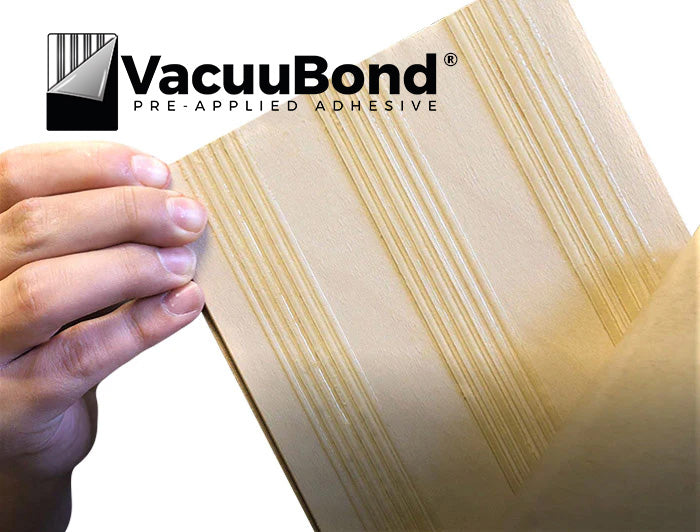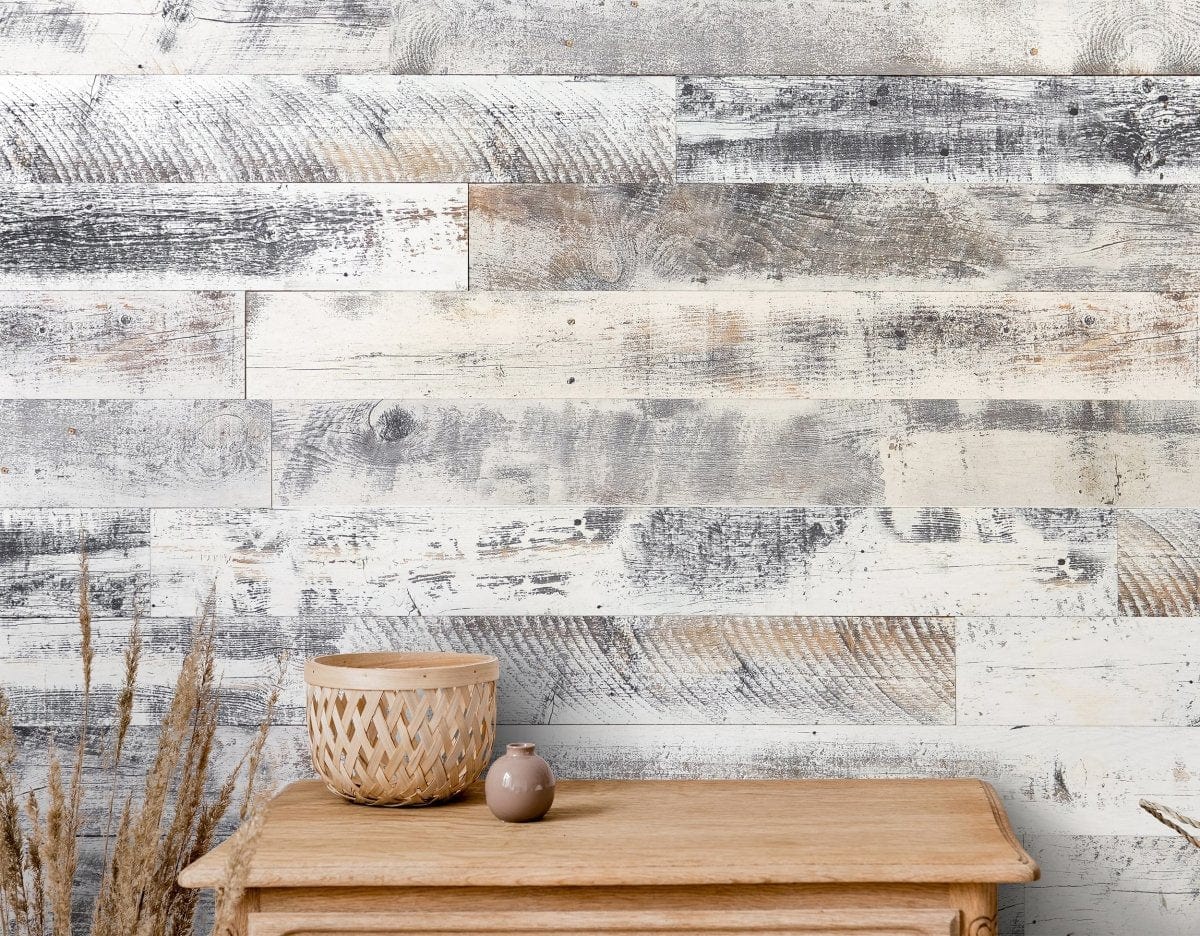Your Cart is Empty
Get your first 3 samples FREE! Use code: 3FREESAMPLES at checkout!
Get your first 3 samples FREE! Use code: 3FREESAMPLES at checkout!
Shop Products
What's Trending
Resources
Wallplanks® Blogs
The Best Top Coat Wood Finish
Pre-Applied Adhesive
Wallplanks® Blogs

View Blogs >
The Best Top Coat Wood Finish

Read More >
Pre-Applied Adhesive

Read More >
The Art of Layering: Combining Wall Panels with Wallpaper for Unique Texture
August 22, 2025 5 min read

In today’s interior design landscape, creating spaces with personality and depth has never been more important. One of the most innovative and visually compelling trends is the use of wall panel wallpaper layering—blending classic wall paneling with modern or vintage wallpaper to achieve remarkable texture and dimension. This sophisticated design technique allows homeowners and designers alike to play with light, materials, patterns, and colors in a way that flat surfaces simply can't replicate.
The Benefits of Layering Wall Panels with Wallpaper
Layering wall panels with wallpaper isn’t just about aesthetics—it’s a design strategy that enhances form, function, and emotional connection to a space.
Added Depth and Dimension
Integrating textured panels and printed wallpapers introduces visual layers that make flat surfaces feel alive. Wood wall panels, for instance, add shadow and tactile richness. When paired with wallpaper—especially botanical prints, geometrics, or metallics—the result is a multi-dimensional canvas that responds dynamically to lighting and perspective.
Elevated Elegance
Wall panels inherently bring a sense of sophistication. From sleek shiplap to dramatic slatted designs or classic wainscoting, the architectural depth they offer pairs beautifully with wallpaper's versatility—be it romantic florals or bold abstracts. The combination evokes high-end design sensibilities found in boutique hotels or luxury residences.
Flexibility and Personalization
Whether your style leans rustic, coastal, minimalist, or maximalist, this technique adapts effortlessly. It allows endless customization through material selection, color coordination, and pattern scale. Want drama? Pair charcoal wall panels with vibrant wallpaper. Prefer tranquility? Opt for light oak panels with subtle linen-textured wallpaper.
Design Tips for Creating Texture
Designing with both panels and wallpaper requires thoughtful planning to ensure a balanced and harmonious outcome. Here’s how to do it effectively.
Plan Your Focal Points
Decide which wall or walls will receive this treatment. Layering works best on a primary accent wall—behind a headboard, fireplace, or sofa, for example. This helps anchor the room visually and avoids overwhelming the space.
Mix Materials Thoughtfully
Combining organic materials like wood with paper-based wallpaper or even textile-backed varieties introduces tactile contrast. Consider:
-
Reclaimed wood planks with matte botanical prints
-
Sleek MDF panels with high-gloss or foil-embossed wallpaper
-
Rustic shiplap with woven grasscloth wallpaper
Each combination creates a unique sensory experience.
Layer Horizontally or Vertically
The “layering” doesn’t need to be literal—think of it spatially. Use panels on the bottom half of the wall (traditional wainscoting style) and wallpaper above. Alternatively, reverse it for a modern twist or use panel insets framed by wallpapered borders. Vertical layering with slatted panels and linear wallpaper patterns can add height and grandeur to a room.
Techniques for Seamless Integration
To achieve a polished finish when combining wall panels with wallpaper, pay attention to the following techniques:
Use Chair Rails and Moldings
A chair rail or molding transition between the wallpaper and wall panel can serve both as a visual break and a functional detail. It adds refinement and neatly separates materials, preventing peeling and wear at edges.
Apply Wallpaper Inside Panel Insets
If your panels include box mouldings or board-and-batten styles, apply wallpaper within each inset. This “framed” approach brings a gallery-like elegance and allows you to showcase prints like artwork.
Consistent Color Tones
Maintain harmony by selecting panels and wallpaper within a coordinated palette. Even if patterns differ, consistent undertones—such as warm beige or cool gray—help unify the overall aesthetic.
Prep and Prime Surfaces
Proper wall preparation ensures longevity. Smooth out panel seams, sand rough areas, and apply a high-quality primer before wallpapering to ensure flawless adhesion and durability.
How to Select Complementary Patterns and Colors
One of the most challenging—and rewarding—parts of this process is choosing wallpaper and wall panels that not only coexist but elevate each other. Here’s how to do it right.
Understand Your Space
Assess the room’s lighting, size, and function. Smaller, darker rooms benefit from lighter tones and delicate patterns to create an airy feel. Larger, sun-filled spaces can handle bold contrasts and darker palettes for drama.
Expert Advice on Color Coordination
Start with the Wall Panels
Choose your wall panel finish first. Whether you go for natural wood tones, painted white, or bold charcoal hues, the panels set the base tone for the room.
Choose Wallpaper with Intent
Pick a wallpaper that:
-
Enhances the panel’s tone (e.g., olive green wallpaper with walnut panels)
-
Contrasts for drama (e.g., coral or indigo wallpaper with crisp white panels)
-
Echoes a theme or motif in the room (e.g., coastal, art deco, bohemian)
Avoid clashing tones or overly similar colors that lack distinction. Look at the undertones—warm with warm, cool with cool.
Use the 60-30-10 Rule
For a balanced room, apply the 60-30-10 rule:
-
60% of the space should be your dominant color (usually the wall panel)
-
30% your secondary color (wallpaper)
-
10% an accent color (decor accessories, textiles, art)
Case Studies of Layered Designs
Case Study 1: Rustic Modern Living Room
-
Panel: Wallplanks’ White Wash Rustic Planks (textured wood)
-
Wallpaper: Subtle beige and ivory damask
-
Integration: Panels installed from floor to chair rail height; wallpaper applied above
-
Result: A cozy yet elegant atmosphere with visual warmth and pattern balance
Case Study 2: Contemporary Bedroom Retreat
-
Panel: Smooth, charcoal-gray slatted panels (floor to ceiling)
-
Wallpaper: Metallic geometric print in gold and cream, applied in vertical inset sections
-
Result: A moody, luxurious bedroom where each material plays off light differently
Case Study 3: Scandinavian Entryway
-
Panel: Light natural oak half-wall paneling
-
Wallpaper: Minimalist black-and-white line drawings of trees
-
Integration: Wallpaper above the panel with matte black chair rail dividing the two
-
Result: A clean, nature-inspired entrance that’s both functional and visually striking
Make Texture the Heart of Your Design
Combining wall panels with wallpaper is a masterstroke in creating interiors that reflect both character and depth. Whether you're embracing old-world charm with ornate floral wallpaper above traditional panels or crafting a modern space with sleek lines and bold geometrics, layering offers a tactile narrative.
This technique isn’t reserved for professional designers—it’s a practical, versatile approach that can enhance any home or commercial space when done with intention and creativity.
Partner with Wallplanks for Your Next Layered Wall Project
AtWallplanks, we make it easy for you to achieve these stunning transformations. Based in Weston, Wisconsin, and founded in 2017 by industry veteranTryggvi Magnusson, we’re passionate about creatingdurable, beautiful, and easy-to-use wall solutions.
As a division ofFrom the Forest, LLC, a trusted manufacturer of premium hardwood flooring since 2007, our commitment to quality is unmatched. Every Wallplanks product isproudly made in the USA using materials sourced exclusively from North America.
Explore our extensive catalog of shiplap, peel-and-stick wood panels, and slatted wall designs—ideal for layering with wallpaper. Whether you're a DIY enthusiast or a design professional, Wallplanks helps youtransform your interiors with ease and style.
Ready to get started? Browse our collection and discover the perfect panels for your next project.

